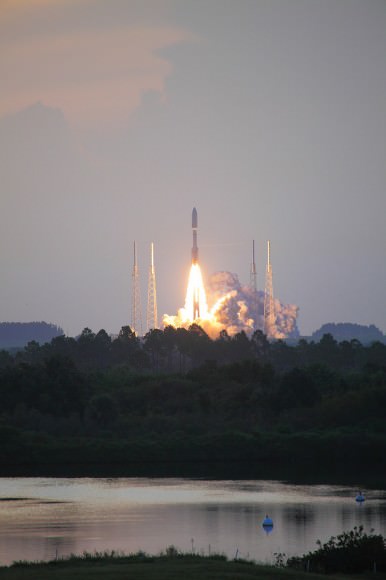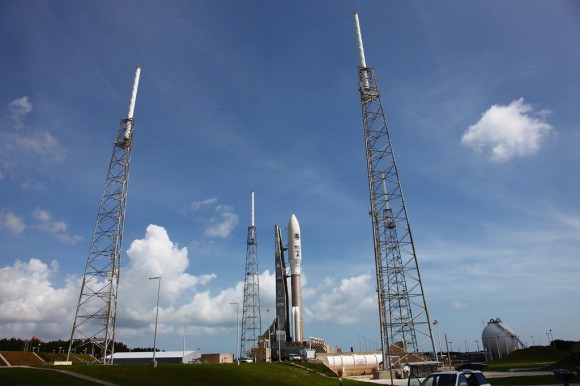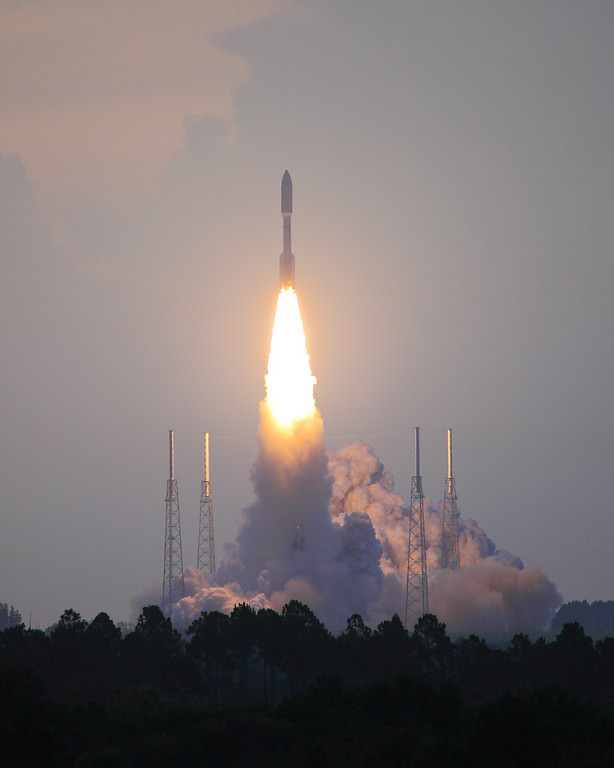[/caption]
The U.S. Air Force successfully launched the first Advanced Extremely High Frequency satellite (AEHF-1) on top of a United Launch Alliance (ULA) Atlas V rocket Saturday, Aug. 14 at 7:07 a.m. EDT. The Atlas V lifted off from Cape Canaveral Air Force Station’s Space Launch Complex 41 (SLC 41) riding a pillar of flame across the morning sky. The window for the launch was two hours long, however it wasn’t needed, the launch occurred on the first attempt.
“As we expected it was a totally successful launch.” said U.S. Air Force Captain Glorimar Rodriguez.
The AEHF constellation of satellites will replace the aging Milstar satellites. The more-modern AEHF is designed to ensure rapid communications for military leaders. This new, jam-proof system will be the link between the president and the armed forces in the event of a nuclear attack. Lockheed Martin is the prime contractor to construct both the AEHF fleet of satellites as well as the mission control center where the satellites will be operated.

There are a number of U.S. allies that are involved with the AEHF program and can use these satellites once the system is activated. Some of these allies include the Netherlands, Canada and the United Kingdom.
When the system is complete it will be comprised of three functioning satellites and a spare satellite. These satellites will be inter-connected and are capable of communicating with one another. They will provide the military with vital communications-related data including, but not limited to, maps, video and targeting data. When operational, the AEHF constellation will be operated by the 4th Space Operations Squadron, who are stationed at Schriever Air Force Base, CO.


